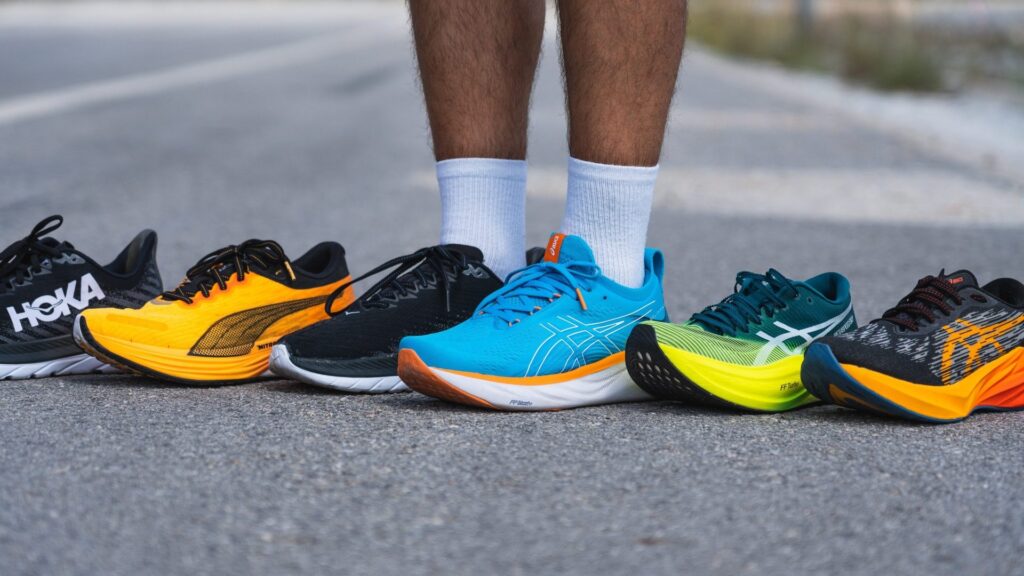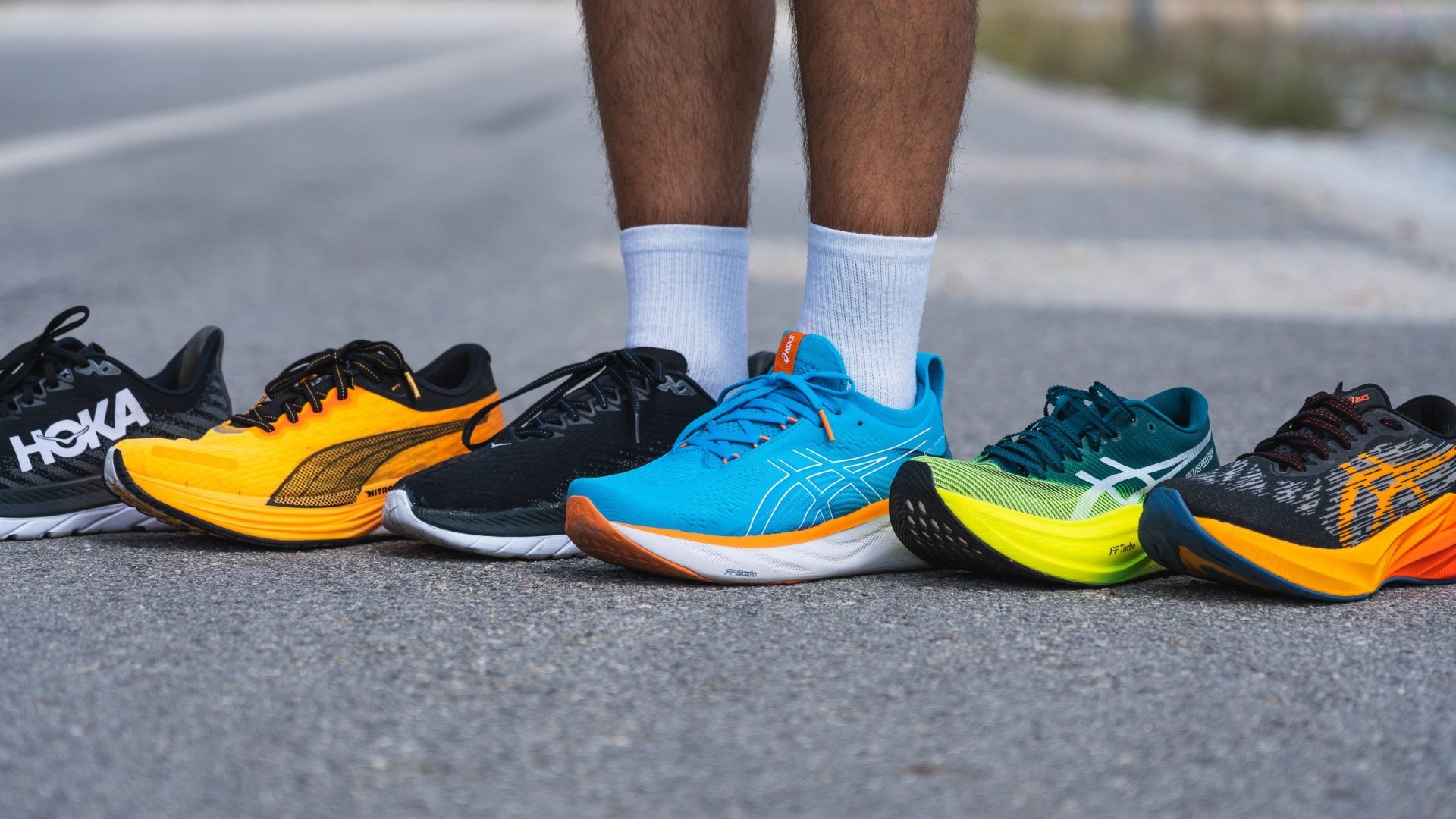
The Definitive Guide to the Best Brand for Running Shoes in 2024
Choosing the best brand for running shoes can feel overwhelming. With countless options available, each boasting unique technologies and designs, how do you determine which brand truly delivers on performance, comfort, and durability? This guide breaks down the top contenders in the running shoe market, offering insights based on research, runner feedback, and expert analysis. Whether you’re a seasoned marathoner or just starting your running journey, understanding the strengths of each brand will help you make an informed decision and find the perfect pair to propel you forward.
Understanding Your Running Needs
Before diving into specific brands, it’s crucial to assess your individual running needs. Consider these factors:
- Running Style: Are you a neutral runner, overpronator, or supinator? Understanding your pronation will guide you towards shoes that provide the necessary support and stability.
- Running Surface: Do you primarily run on roads, trails, or a treadmill? Different surfaces require different levels of cushioning and traction.
- Distance: Are you training for long-distance races or sticking to shorter, more frequent runs? Longer distances often necessitate shoes with more cushioning and support.
- Foot Shape and Size: Ensure you get properly fitted for running shoes. Many specialty running stores offer gait analysis and fitting services.
- Budget: Running shoes range in price, so set a realistic budget before you start shopping.
Top Brands for Running Shoes: A Detailed Look
Here’s a comprehensive overview of some of the best brands for running shoes, highlighting their key features and target audience:
Nike
Nike is a global sportswear giant renowned for its innovative technologies and stylish designs. Their running shoe lineup caters to a wide range of runners, from beginners to elite athletes.
- Key Technologies: Nike React foam (responsive cushioning), Zoom Air (energy return), Flyknit (breathable and supportive upper).
- Popular Models: Nike Air Zoom Pegasus (versatile daily trainer), Nike ZoomX Vaporfly (performance racing shoe), Nike React Infinity Run (stability and injury prevention).
- Pros: Wide selection, innovative technologies, stylish designs, readily available.
- Cons: Can be pricey, some models may not be durable enough for high mileage.
Adidas
Adidas is another leading sportswear brand with a long history of producing high-quality running shoes. They are particularly known for their Boost cushioning technology.
- Key Technologies: Boost (responsive cushioning), Primeknit (comfortable and supportive upper), Continental rubber outsole (excellent traction).
- Popular Models: Adidas Ultraboost (comfortable daily trainer), Adidas Adizero Adios Pro (performance racing shoe), Adidas Solarboost (stability and cushioning).
- Pros: Excellent cushioning, comfortable uppers, durable outsoles, stylish designs.
- Cons: Can be expensive, some models may feel bulky.
Brooks
Brooks is a brand dedicated solely to running, focusing on creating shoes that provide optimal comfort, support, and performance. They are particularly popular among runners who prioritize cushioning and stability.
- Key Technologies: DNA LOFT (soft and responsive cushioning), GuideRails (holistic support system), Segmented Crash Pad (smooth transitions).
- Popular Models: Brooks Ghost (versatile daily trainer), Brooks Glycerin (plush cushioning), Brooks Adrenaline GTS (stability and support).
- Pros: Excellent cushioning, supportive designs, durable construction, wide range of sizes and widths.
- Cons: Can be less stylish than some other brands, some models may feel bulky.
Saucony
Saucony is a brand known for its focus on innovation and performance. Their running shoes are designed to provide a smooth and efficient ride, making them popular among serious runners.
- Key Technologies: PWRRUN (responsive cushioning), FORMFIT (adaptive fit), ISOFIT (dynamic upper).
- Popular Models: Saucony Kinvara (lightweight and flexible trainer), Saucony Triumph (plush cushioning), Saucony Guide (stability and support).
- Pros: Lightweight and flexible designs, responsive cushioning, comfortable uppers, durable construction.
- Cons: Can be less cushioned than some other brands, some models may not be suitable for high mileage.
Hoka One One
Hoka One One (now simply Hoka) is known for its maximalist cushioning and rocker-shaped soles. Their shoes are designed to provide a smooth and comfortable ride, reducing impact and fatigue.
- Key Technologies: Oversized midsole (maximal cushioning), Meta-Rocker (smooth transitions), Active Foot Frame (stability).
- Popular Models: Hoka Clifton (lightweight and cushioned trainer), Hoka Bondi (maximal cushioning), Hoka Speedgoat (trail running shoe).
- Pros: Excellent cushioning, smooth ride, reduced impact, comfortable uppers.
- Cons: Can feel bulky, may not be suitable for all running styles, some models can be less stable.
New Balance
New Balance is a brand with a long history of producing high-quality running shoes. They are known for their comfortable fit, durable construction, and wide range of sizes and widths. New Balance is often considered a best brand for running shoes due to their consistent quality.
- Key Technologies: Fresh Foam (cushioning and responsiveness), FuelCell (energy return), Hypoknit (breathable and supportive upper).
- Popular Models: New Balance Fresh Foam 1080 (plush cushioning), New Balance FuelCell Rebel (lightweight and responsive trainer), New Balance 880 (versatile daily trainer).
- Pros: Comfortable fit, durable construction, wide range of sizes and widths, excellent cushioning.
- Cons: Can be less stylish than some other brands, some models may feel bulky.
ASICS
ASICS is a Japanese brand known for its GEL cushioning technology and focus on stability and support. Their running shoes are popular among runners who need extra support for overpronation.
- Key Technologies: GEL (shock absorption), FlyteFoam (lightweight cushioning), Dynamic DuoMax (stability).
- Popular Models: ASICS GEL-Kayano (stability and support), ASICS GEL-Nimbus (plush cushioning), ASICS GT-2000 (versatile daily trainer).
- Pros: Excellent stability and support, good shock absorption, durable construction, wide range of sizes and widths.
- Cons: Can be less stylish than some other brands, some models may feel bulky.
Beyond the Brand: Key Considerations
While choosing the right brand is important, remember that individual shoe models within each brand can vary significantly. Consider the following when selecting a specific shoe:
- Stack Height: Refers to the amount of cushioning underfoot. Higher stack height generally provides more cushioning.
- Drop: The difference in height between the heel and the forefoot. Lower drop shoes encourage a more natural running style.
- Weight: Lighter shoes can improve speed and efficiency, while heavier shoes may provide more cushioning and support.
- Fit: Ensure the shoe fits comfortably and securely. Leave about a thumb’s width of space between your longest toe and the end of the shoe.
Getting Fitted and Trying Before You Buy
Whenever possible, visit a specialty running store to get fitted for running shoes by a knowledgeable professional. They can analyze your gait, assess your foot type, and recommend shoes that are appropriate for your needs. Trying on shoes before you buy is crucial to ensure a comfortable and secure fit. Don’t hesitate to run a few strides in the store to get a feel for the shoe’s performance. This will help you determine the best brand for running shoes and model for your individual requirements.
The Future of Running Shoe Technology
The running shoe industry is constantly evolving, with brands continually developing new technologies and designs to improve performance and comfort. Expect to see continued advancements in cushioning materials, upper construction, and outsole traction in the years to come. Sustainable materials and manufacturing processes are also becoming increasingly important.
Conclusion: Finding Your Perfect Running Shoe
Ultimately, the best brand for running shoes is the one that works best for you. Consider your individual running needs, research different brands and models, and get fitted by a professional. By taking the time to find the right shoe, you can improve your running performance, reduce your risk of injury, and enjoy your runs even more. Don’t be afraid to experiment with different brands and models until you find the perfect fit. [See also: How to Choose the Right Running Shoe for Your Foot Type] Remember that comfort and performance are paramount. Good luck and happy running!
Choosing the right running shoe can make all the difference, and understanding what makes a best brand for running shoes is the first step. Remember to consider your pronation, running surface, and distance when making your decision. With so many great options available, you’re sure to find the perfect pair to help you reach your running goals. Several brands offer trial periods, allowing you to test the shoes before committing to a purchase.

